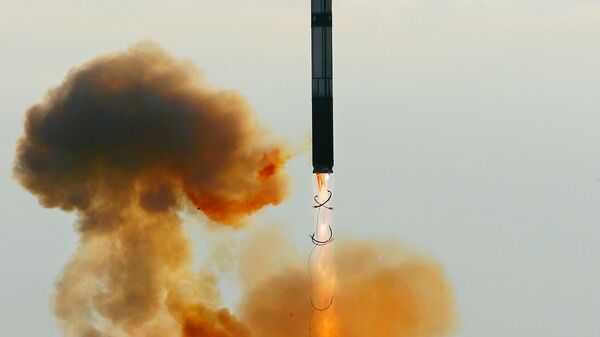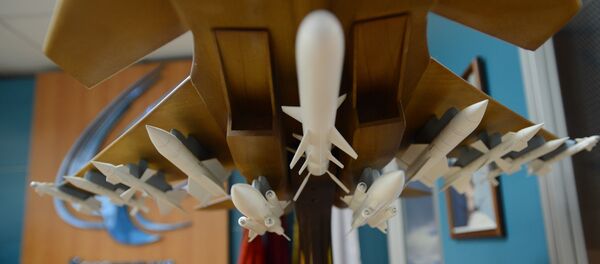The Sarmat, undergoing development at the Makeyev Rocket Design Bureau in the city of Miass, just east of the Ural Mountains, is Russia's answer to the threat of missile defense systems designed to undermine the global strategic balance.
On Sunday, Makeyev released an illustration of how the new secretive weapon, expected to go into production as soon as 2018, actually looks.

The image is accompanied by a short text: "In accordance with the Decree of the Russian Government 'On the State Defense Order for 2010 and the planning period 2012-2013', the Makeyev Rocket Design Bureau was instructed to start design and development work on the Sarmat. In June 2011, the Russian Ministry of Defense signed a state contract for the Sarmat's development. The prospective strategic missile system is being developed in order to create an assured and effective nuclear deterrent for Russia's strategic forces."
The text is signed by chief designers V. Degtar and Y. Kaverin.
In anticipation of the new missile's appearance, what many foreign defense specialists have found most disconcerting is the prospect of the RS-28 being armed with Project 4202, a Russian hypersonic glider warhead carrier which, after separating from its ICBM launch vehicle, would be able to accelerate to speeds between Mach 7 and Mach 12, acting like a hypersonic cruise missile. The glider, expected to come online between 2020 and 2025, would be capable of maneuvering to overcome any existing or prospective missile defenses to reach its target.
The Sarmat is expected to serve as an effective response to US missile defense deployments near Russia's borders, as well as projects such as Prompt Global Strike, a Pentagon initiative meant to overcome a prospective enemy's strategic deterrent using the massed launch of conventional cruise missiles.



